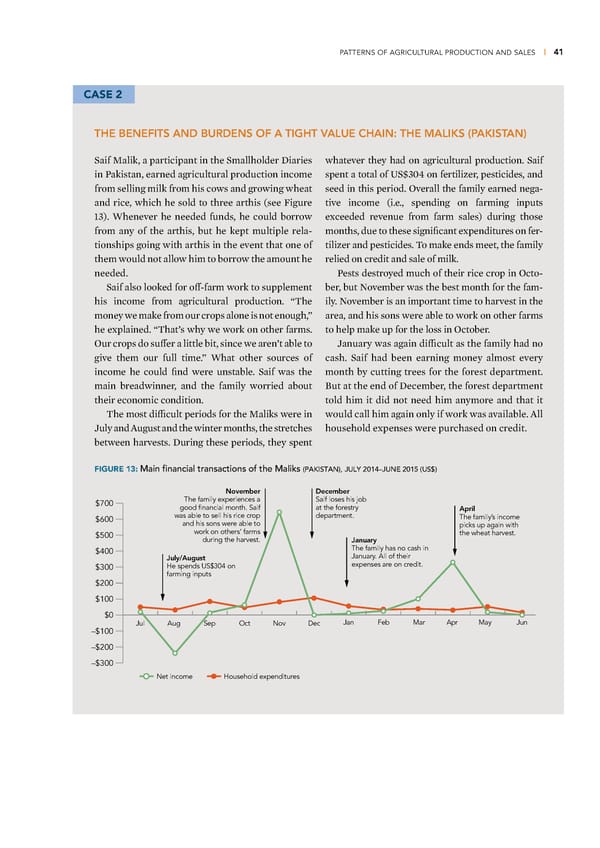PATTERNS OF AGRICULTURAL PRODUCTION AND SALES | 41 CASE 2 THE BENEFITS AND BURDENS OF A TIGHT VALUE CHAIN: THE MALIKS (PAKISTAN) Saif –ali, a participant in the Smallholder ‰iaries whatever they had on agricultural production Saif in aistan, earned agricultural production income spent a total of ©S±Ÿ’“ on fertili—er, pesticides, and from selling mil from his cows and growing wheat seed in this period ¦verall the family earned nega- and rice, which he sold to three arthis (see igure tive income (ie, spending on farming inputs …Ÿ) ™henever he needed funds, he could borrow exceeded revenue from farm sales) during those from any of the arthis, but he ept multiple rela- months, due to these significant expenditures on fer- tionships going with arthis in the event that one of tili—er and pesticides Œo mae ends meet, the family them would not allow him to borrow the amount he relied on credit and sale of mil needed ests destroyed much of their rice crop in ¦cto- Saif also looed for off-farm wor to supplement ber, but ˜ovember was the best month for the fam- his income from agricultural production “Œhe ily ˜ovember is an important time to harvest in the money we mae from our crops alone is not enough,” area, and his sons were able to wor on other farms he explained “Œhat’s why we wor on other farms to help mae up for the loss in ¦ctober ¦ur crops do suffer a little bit, since we aren’t able to Žanuary was again difficult as the family had no give them our full time” ™hat other sources of cash Saif had been earning money almost every income he could find were unstable Saif was the month by cutting trees for the forest department main breadwinner, and the family worried about £ut at the end of ‰ecember, the forest department their economic condition told him it did not need him anymore and that it Œhe most difficult periods for the –alis were in would call him again only if wor was available ˆll Žuly and ˆugust and the winter months, the stretches household expenses were purchased on credit between harvests ‰uring these periods, they spent FIGURE 13: Main financial transactions of the Maliks (PAKISTAN), JULY 2014–JUNE 2015 (US$) November December $700 The family experiences a Saif loses his job good financial month. Saif at the forestry April $600 was able to sell his rice crop department. The family’s income and his sons were able to picks up again with $500 work on others’ farms the wheat harvest. during the harvest. January $400 The family has no cash in July/August January. All of their $300 He spends US$304 on expenses are on credit. farming inputs $200 $100 $0 JulAug SepOct NovDec JanFeb Mar Apr MayJun –$100 –$200 –$300 Net income Household expenditures
 Financial Diaries with Smallholder Families Page 54 Page 56
Financial Diaries with Smallholder Families Page 54 Page 56